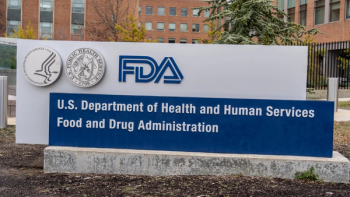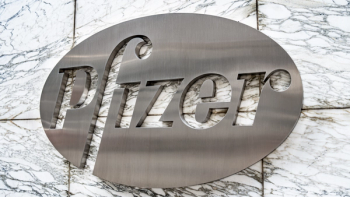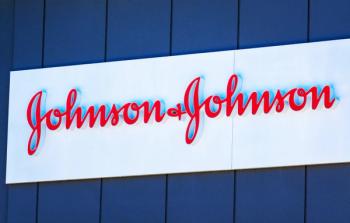Key Takeaways
- Lunsumio and Polivy improve progression-free survival (PFS): The combination therapy achieved a median PFS of 11.5 months versus 3.8 months with Rituxan (rituximab), gemcitabine, and oxaliplatin in relapsed or refractory large B-cell lymphoma.
- High response and remission rates sustained over time: Objective response and complete response rates were 70.3% and 51.4%, respectively, with nearly 75% of complete responders still in remission after one year.
- Favorable safety profile supports outpatient use: Low incidence of severe cytokine release syndrome and without neurotoxicity events position the therapy as a potential off-the-shelf, chemotherapy-free alternative.
Results from the Phase III SUNMO trial show that Roche’s subcutaneous (SC) combination of Lunsumio (mosunetuzumab-axgb) and Polivy (polatuzumab vedotin-piiq) achieved statistically significant improvements in both progression-free survival (PFS) and objective response rate (ORR) in patients with relapsed or refractory (R/R) large B-cell lymphoma (LBCL) who are ineligible for stem-cell transplant. The data were first presented at the 18th International Conference on Malignant Lymphoma.1
How does Roche’s Lunsumio and Polivy Combination Compare to Current Second-Line Standards in LBCL?
“Lunsumio and Polivy represent the first combination of a bispecific antibody and antibody-drug conjugate, which could avoid chemotherapy and potentially provide an alternative option for some patients with relapsed or refractory LBCL,” said Levi Garraway, MD, PhD, chief medical officer, head, global product development, Roche, in a press release. “We are also encouraged by the favorable safety profile and potential for outpatient use of this regimen, which may suit diverse patient and healthcare system needs.”
SUNMO Trial Design and Endpoints
- The international, multicenter, randomized SUNMO trial evaluated the efficacy and safety of SC Lunsumio plus Polivy in 242 patients compared to Rituxan (rituximab), gemcitabine, and oxaliplatin (R-GemOx).
- The trial’s dual primary endpoints were PFS and ORR.
- Secondary endpoints included overall survival (OS), duration of objective response, complete response rate (CRR), duration of complete response, safety and tolerability, and patient-reported outcomes.1,2
Key Efficacy and Safety Results
- Results showed that the combination treatment achieved an ORR and CRR of 70.3% and 51.4%, respectively, compared to 40% and 24.3% with R-GemOx.
- Median PFS for the combination was 11.5 months compared to 3.8 months for R-GemOx.
- At a median follow-up of 23.2 months, the combination reduced the risk of disease progression or death by 59%.
- The PFS rate at one year was more than doubled at 48.5%.
- While OS data were not mature at the time of data readout, it favored the Lunsumio plus Polivy combination, with a median OS of 18.7 months compared to 13.6 months for R-GemOx.
- The complete response rate for the combination was 51.4% compared to 24.3% for GemOx. Nearly 75% of patients with a complete response were still in remission after one year compared to 44.1% for R-GemOx.
- The safety profile of the combination was consistent with the known profiles of each treatment individually.
- Cytokine release syndrome (CRS) occurred in about 25% of patients receiving the combination, but fewer than 5% experienced more severe grade 2 or 3 CRS.
- No cases of immune effector cell-associated neurotoxicity syndrome were reported.
- Rates of serious and fatal adverse events (AEs) comparable between the combination and R-GemOx arms, while fewer patients on Lunsumio and Polivy discontinued treatment due to AEs.1
Disease Background and Regulatory Outlook
According to the Leukemia & Lymphoma Society, LBCL is the most common form of lymphoma and accounts for 25% of all cases in the United States.3 According to the Lymphoma Research Foundation, over 18,000 people are diagnosed with LBCL annually. While it can occur during childhood, it is more common in people over 60 years of age at the time of diagnosis.4
Moving forward, Roche intends to submit the data to the FDA and other global health authorities.1
“There remains a clear need for effective and well-tolerated treatments for people with this difficult-to-treat disease,” said Jason Westin, professor of lymphoma and director of lymphoma clinical research, The University of Texas, MD Anderson Cancer Center. “If approved, this off-the-shelf treatment combination of mosunetuzumab-axgb and polatuzumab vedotin-piiq could be administered over a fixed period of time, without mandatory hospitalization or traditional chemotherapy, which could provide a meaningful option for patients with relapsed or refractory LBCL.”
References
- Genentech’s Lunsumio and Polivy Combination Significantly Prolongs Remission for People With Relapsed or Refractory Large B-Cell Lymphoma. Genentech. June 20, 2025. Accessed June 24, 2025. https://www.gene.com/media/press-releases/15069/2025-06-20/genentechs-lunsumio-and-polivy-combinati
- A Study Evaluating Efficacy and Safety of Mosunetuzumab in Combination With Polatuzumab Vedotin Compared to Rituximab in Combination With Gemcitabine Plus Oxaliplatin in Participants With Relapsed or Refractory Aggressive B-Cell Non-Hodgkin's Lymphoma (SUNMO). Clinicaltrials.gov. Accessed June 24, 2025. https://clinicaltrials.gov/study/NCT05171647
- Diffuse Large B-Cell Lymphoma (DLBCL). LLS. Accessed June 24, 2025. https://www.lls.org/research/diffuse-large-b-cell-lymphoma-dlbcl#:~:text=Diffuse%20large%20B%2Dcell%20lymphoma%20(DLBCL)%20is%20derived%20from,of%20DLBCL%20diagnosed%20per%20year).
- Diffuse Large B-Cell Lymphoma. Lymphoma Research Foundation. Accessed June 24, 2025. https://www.lymphoma.org/understanding-lymphoma/aboutlymphoma/nhl/dlbcl/





